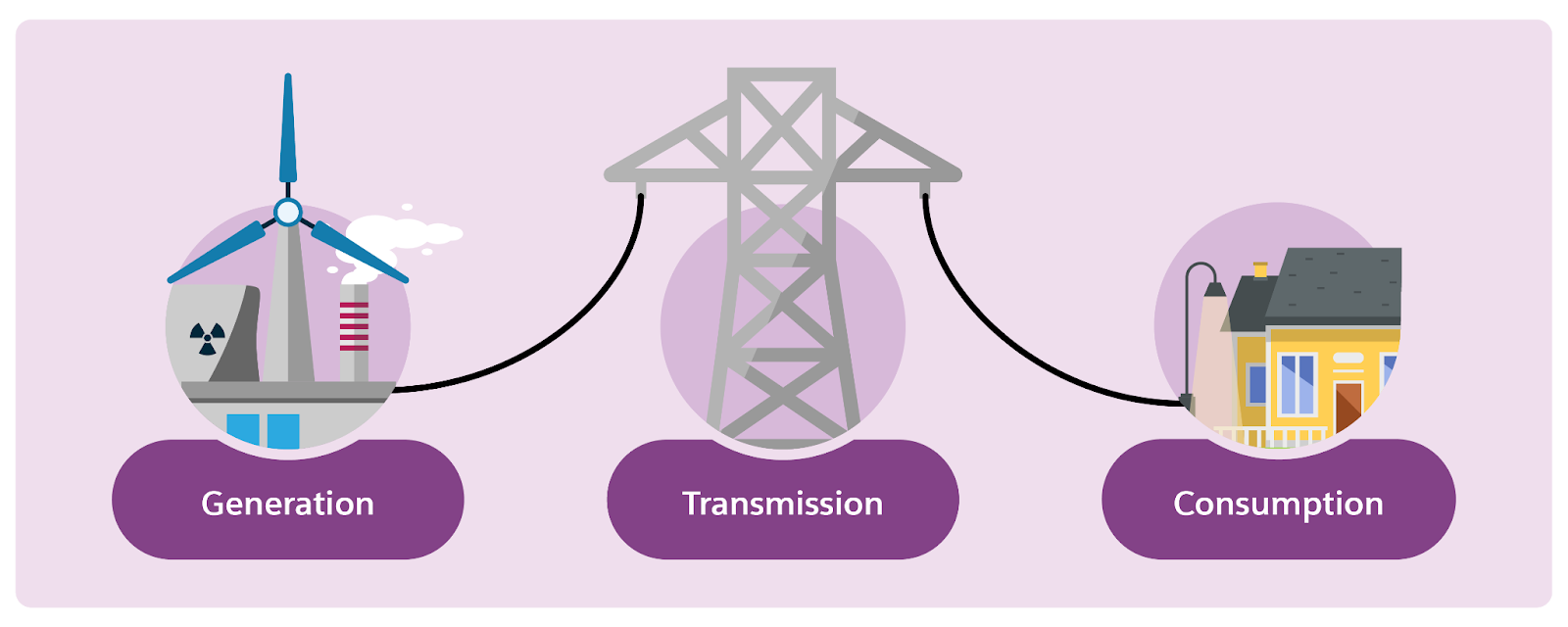Get to Know the Energy and Utilities Industries
Learning Objectives
After completing this unit, you’ll be able to:
- Describe the energy and utilities industry.
- Discuss the current energy and utilities industry outlook.
The Energy Industry at a Glance
Before the industrial revolution, our energy needs were modest. For heat, we relied on the sun, or we burned wood and straw. For transportation, horses gave us mobility, and the wind in our sails helped us explore the world.
For a century, you had only one option for energy service. Utility companies didn’t need to compete, and you couldn’t shop around. Utilities offered one service, electricity, and everyone wanted it.
Today, many customers have different options, including the type and source of energy they buy, and whom they buy it from. They can shop for rates and energy-efficient appliance rebates to suit their energy needs.
In a deregulated market, customers enjoy greater freedom in shopping for utility services, because deregulation increases competition, and competition multiplies customer choice. This means multiple utility companies compete to provide better services to customers. As they say, competition in a market is always good for customers.
Add customer demand to this. Today’s customer expects to engage their utility provider for other reasons, not just to report outages to the call center. Customers now want digital services such as:
- Status updates through social media
- Online bill payment
- Incentives and offers over self-service mobile channels
In fact, customers want to be informed through all available communication channels, such as text, email, and social media.
They no longer depend solely on utilities for their energy needs, because they can get their energy from non-utility companies, too. For instance, some tech and automobile companies are also offering utility services to consumers like never before.
Consumers can also generate electricity themselves by using solar panels and wind turbines. So, utilities aren’t only competing with non-utility companies but also customers to own the energy-customer relationship.
Most people rely on electricity, gas, and water. So, the chances to improve and speed up services for billions are huge.
Energy and Utilities Industry Outlook
The global energy and utilities industry includes three major categories of natural resources: electricity, natural gas, and water. The industry is responsible for the safe, secure, reliable, and sustainable generation, transmission, and distribution of these resources. The key industry segments are:
- Generation
- Transmission and distribution
- Customer or retail
- Water distribution
- Natural gas transmission and distribution

A value chain is the complete set of activities starting from energy generation, transmission, marketing, and finally distribution to retailers and customers. An efficient value chain creates economic value for customers, employees, and society at large.
You need a solid distribution network to guarantee a stable supply of energy to customers. Energy production, marketing, and promotion are activities that are now open to competition. However, power distribution is still a cost-managed monopoly business in most parts of the world. Government-owned entities usually manage the power distribution business, which has a slightly different value chain compared to privately managed ones.
Renewable energy has been gaining momentum in the electricity industry as the infrastructure and logistics for generating electricity from renewable sources have become cheaper and more accessible. Renewable energy uses naturally replenished sources, such as the sun, wind, water, the earth’s heat, and plants. Renewable energy plays an important role in the world’s energy security and in reducing greenhouse gas emissions.
The energy and utilities industry faces several challenges, such as:
- New and more stringent regulations
- Nuclear vulnerability in some countries
- Security-related issues around the transport of raw materials
To grow in these conditions, companies must digitally transform, reorganize, and change their action plans. This means investing in new technologies and methodologies, including information analytics.
Key Industry Terms
Before you move on, learn about common industry terms. Click each term to learn more.
Summary
In this unit, you learned about the energy and utilities industry in general and the various industry segments. You also discovered the key terms used in the energy and utilities industry.
In the next unit, you learn about the various types of utility, energy, and waste companies in detail.